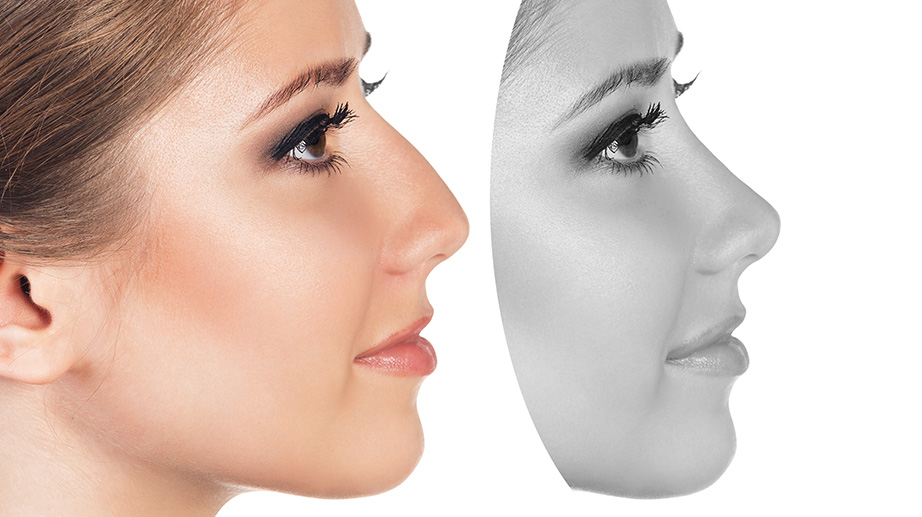The Art of Rhinoplasty: Achieving Balance and Harmony

When we think about facial beauty and harmony, the eyes, lips, and cheekbones often come to mind. However, the centerpiece of the face—the nose—plays a significant role in achieving balance and harmony. For many individuals dissatisfied with their nose's appearance, rhinoplasty offers a transformative solution. In this blog, we'll delve into the art of rhinoplasty, exploring its concept, common concerns it addresses, surgical techniques, showcasing successful before-and-after images, and shedding light on the recovery process and expected results.
Understanding the Art of Rhinoplasty
Rhinoplasty, commonly called a "nose job," is a surgical procedure to reshape and recontour the nose. It's not just about changing the aesthetics; it's also about improving functionality and achieving facial harmony. The nose plays a crucial role in balancing facial features, and even subtle alterations can significantly affect one's overall appearance.
The Importance of Nasal Symmetry
One of the primary goals of rhinoplasty is to address nasal asymmetry. Few people have perfectly symmetrical facial features, and this includes the nose. Asymmetry can result from various factors, such as genetics, trauma, or previous surgeries. Rhinoplasty allows for correcting these imbalances, creating a more symmetrical and aesthetically pleasing nose.
Correcting Nasal Humps and Dorsal Irregularities
Another common concern that rhinoplasty can address is the presence of a dorsal hump or irregularities along the nasal bridge. A dorsal hump refers to a raised area on the bridge of the nose that can give the nose an undesirable "hooked" appearance. Through rhinoplasty, skilled surgeons can carefully remove or reshape this hump, resulting in a smoother and more refined nasal profile.
Refining Bulbous Tips
A bulbous or overly rounded nasal tip can be a source of self-consciousness for many individuals. Rhinoplasty offers a solution by allowing surgeons to sculpt and refine the nasal tip. This process involves reshaping the cartilage and tissues to create a more defined and aesthetically pleasing tip that complements the nasal structure.
Surgical Techniques: Open vs. Closed Rhinoplasty
Rhinoplasty can be performed using two main techniques: open and closed. The choice between these techniques depends on the patient's needs and the surgeon's preferences.
Open Rhinoplasty
In an open rhinoplasty, a small incision is made across the columella (the strip of skin between the nostrils). This approach gives the surgeon direct visibility and access to the nasal structures. Open rhinoplasty is often preferred for more complex cases that require extensive reshaping or reconstruction. It allows for precise adjustments and is particularly beneficial when addressing asymmetry, dorsal humps, and complex tip refinement.
Closed Rhinoplasty
On the other hand, closed rhinoplasty involves incisions made inside the nostrils, making it a "scarless" procedure as there are no visible external incisions. While closed rhinoplasty is less invasive and has a shorter recovery period, it may be limited in its ability to address complex cases that require extensive access to nasal structures. It is typically suitable for patients with minor concerns, such as tip refinement or hump reduction.
Before-and-After: Transformations Through Rhinoplasty
A picture is worth a thousand words; in rhinoplasty, before-and-after images tell compelling stories of transformation. Many individuals who undergo rhinoplasty experience remarkable improvements in their appearance and self-confidence.
Case 1: Correcting Asymmetry In this case, the patient had noticeable nasal asymmetry. After rhinoplasty, the nose appears more balanced and harmonious with the other facial features.
Case 2: Dorsal Hump Reduction The presence of a dorsal hump was a concern for this patient. Rhinoplasty successfully removed the hump, resulting in a smoother nasal bridge.
Case 3: Tip Refinement The patient sought to refine the bulbous nasal tip. Rhinoplasty achieved the desired tip refinement, enhancing the overall appearance of the nose.
The Road to Recovery and Expected Results
Recovery from rhinoplasty varies from person to person but typically follows a similar timeline. Patients can expect swelling and bruising around the nose and eyes in the immediate postoperative period. This initial swelling gradually subsides over the first few weeks, although subtle residual swelling may persist for several months. Patients must diligently follow their surgeon's postoperative care instructions to ensure a smooth recovery.
As the swelling diminishes, the actual results of the rhinoplasty become more apparent. Being patient during this process is essential, as the outcome may take several months to materialize fully. However, the wait is well worth it for most patients, as they can enjoy a more balanced and harmonious facial appearance that enhances their overall self-esteem and confidence.
Conclusion
Rhinoplasty is a remarkable art form in the world of plastic surgery. It involves reshaping the nose and achieving balance and harmony within the entire facial framework. Through open and closed rhinoplasty techniques, skilled surgeons can address common concerns like asymmetry, dorsal humps, and bulbous tips, creating transformative results. Before-and-after images showcase the power of rhinoplasty to enhance a person's appearance and self-confidence. While recovery may take time, the ultimate goal of achieving facial harmony makes the journey worthwhile. If you've ever considered rhinoplasty, consult a board-certified plastic surgeon to explore your options and embark on your path to a more balanced and harmonious facial aesthetic.
The content published on the website is for creating awareness and educating purposes only. This shall not be considered as a substitute for professional advice or prescription. The results mentioned on the website may vary from person to person as each case is different.

